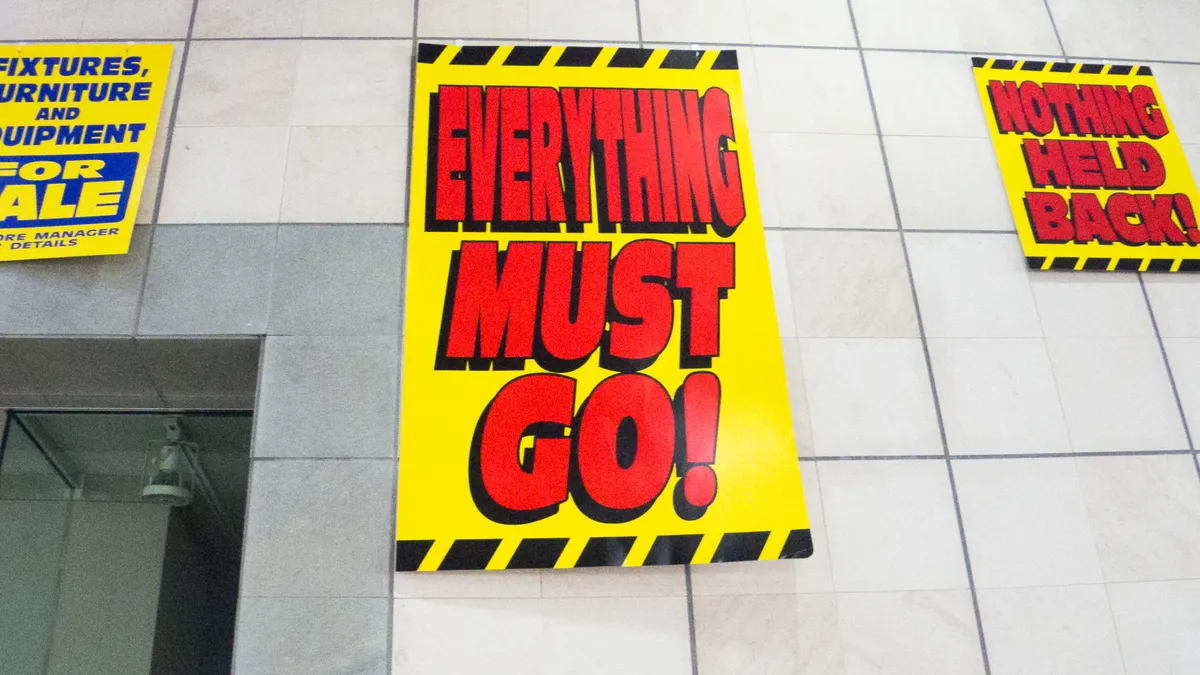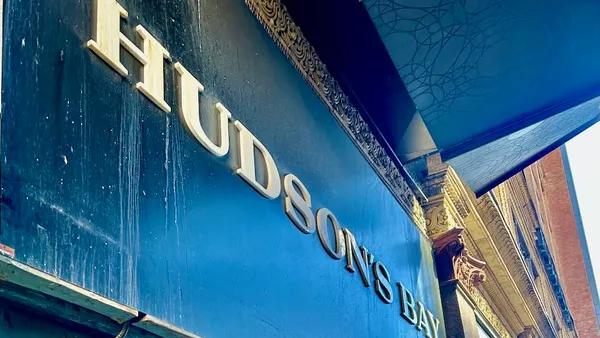Dive Brief:
- Debt defaults in retail and apparel will decline this year to an estimated 5.3%, according to a recent Moody's report on companies in the industry it rates.
- That figure is well below the record default surge last year when pressures from the pandemic led 20% of speculative-grade companies covered by Moody's to default on their debt.
- Despite economic growth and available capital, Moody's analysts still expect default levels to remain well above past years and only slightly below default levels during the Great Recession of 2008 to 2009.
Dive Insight:
The early months of the COVID-19 era put massive strains on even healthy companies in retail. The pandemic struck right at the heart of the industry. With store revenue shut off, nearly every company in the sector scrambled to raise and preserve cash just to stay alive with revenue bottoming out.
Many companies with strong balance sheets pre-pandemic saw their credit ratings drop as their businesses took a hit, and they took on new debt and other liabilities.
In that environment, bankruptcies surged. For comparison, four months into the year there have been six major bankruptcies so far in 2021 tracked by Retail Dive. That's fewer than the number of retailers that filed in the month of May alone last year, according to Retail Dive research. (July 2020 saw eight major retail bankruptcies.)
And that is just bankruptcies. Included in Moody's default numbers for 2020 were companies, such as Party City and J. Jill, that were able to work out distressed deals with lenders that came short of the promise in their original debt obligations.
Put simply, 2021 has been better than 2020, but that is a low bar. Government stimulus, the rollout of vaccines and a corresponding drop in cases from last winter's frightening surge all helped support retail. Still, uncertainty remains, and shopping levels in many brick-and-mortar sectors remain below 2019 levels.
Moody's analysts noted that "while retail sales continue to recover, consumer spending is still heavily influenced by how fast social distancing restrictions will be lifted and how long the benefits of the government stimulus will last."
"Those at highest risk are the weaker, smaller companies with operating challenges, constrained liquidity or operations in challenged subsectors such as apparel and department stores," the analysts added. "These companies are also less likely to successfully navigate supply chain challenges experienced across the retail industry, and fully capitalize on the return of consumer demand."














